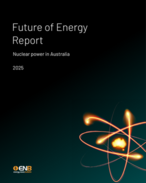This article is 10 years old. Images might not display.
Australia's elevation in the pecking order of LNG nations is based on analysis by Energy News with the help of the industry's bible of production data, the EnergyQuest quarterly.
The Adelaide-based consultancy last week published its wrap-up of the December quarter, thus completing figures for calendar 2014.
Australian LNG production increased by 6% from 23.3 million tonnes in 2013 to a record 24.7Mt, thanks to the North West Shelf and Pluto LNG both producing in excess of capacity, and despite a maintenance shutdown at Darwin LNG.
This placed Australia only 1Mt behind Malaysia in terms of annual production, or about 80,000 tonnes per month.
But since the end of 2014, the first cargoes have set sail from Australia's newest (and fourth) LNG project, QCLNG.
EnergyQuest estimates 470,000 tonnes were exported in the first two months of 2015, taking national LNG output comfortably ahead of Malaysia for the first time on a running basis.
Malaysia will not be standing still, with a ninth train at the massive Bintulu, Sarawak complex due to be commissioned in late 2015, lifting capacity by 3.6MMtpa.
Petronas is also hoping to commission a 1.2MMtpa floating LNG project by the end of this year.
But after years of work and massive investment, 2015 will be an incredible year for Australia's LNG industry.
Gladstone LNG is expected to ship first cargoes as early as July or August, with the second train in production before the end of the year.
Australian Pacific LNG has roughly the same timetable for trains 1 and 2, while QCLNG is expected to bring its second train into production in the third quarter.
On the other side of the continent, the first train at Gorgon LNG is expected to be in production in the final quarter.
By the end of this year, Australia's LNG production capacity will have climbed from 24.7MMtpa to 55.1Mtpa, or almost double Malaysia's 30MMtpa.
And in 2016, Australia will close rapidly on the world's biggest LNG producer, Qatar, which has held its capacity steady at 77MMtpa in recent years and turned its attention to a $US10 billion domestic gas project.
Next year will see Australian LNG capacity climb to 70MMtpa with the commissioning of the trains 2 and 3 Gorgon and the first train at Wheatstone.
The production boom will climax in 2017 at 86.5MMtpa with the commissioning of train 2 at Wheatstone, Ichthys and Prelude.
EnergyQuest CEO Dr Graeme Bethune said that while there were still risks for project developers, Australia had already chalked up some impressive achievements.
"The first LNG cargoes from Gladstone were delivered in just over four years since project sanction in 2010," Bethune said.
"We hear a lot about budget blowouts and project delays, but there has not been much commentary about this remarkable achievement, soon to be replicated on both the east and west coasts.
"Unfortunately, the slump in oil prices has cast a pall over these achievements and created widespread uncertainty for those in the industry who have worked so hard over the last five years."
EnergyQuest figures show that 2014 was a year of multiple records for the oil and gas industry.
Total petroleum production increased by 6% to a record 545 million barrels of oil equivalent. Domestic gas production rose by 2% to a record 1134.5 petajoules, driven by east coast producers.
Woodside again topped the list of Australian producers, with output of 99.2MMboe, up 10% from the previous year.
The Perth-based leader now accounts for almost one in every five barrels of all petroleum production, and extended its lead over BHP Billiton (up 8% to 87MMboe).
Santos dropped down the ranking from third to fifth position, with local production down 8% to 36MMboe. (Total Santos production was higher, however, with the start-up of PNG LNG).
The producers' league table has historically been shaped by the equity production shares of participants in the North West Shelf and the Gippsland Basin joint venture, and changed little in decades.
But the rankings will undergo a major shake-up from this year as LNG projects come on stream.
When the last of the LNG projects is commissioned in 2017, Chevron will be the new giant of Australian petroleum production with output of about 170MMboe, based on number crunching by Energy News.
Shell and Woodside will be vying for second and third position, with about 100mmboe each. Inpex is expected to jump to fourth thanks to the liquids-rich Ichthys project and BHP Billiton should round out the top five.
Total Australian petroleum production will soar from 545MMboe in 2014 to more than 1200MMboe in 2017.
BP's Statistical Review suggests this would leapfrog Australia from the world's 24th largest petroleum producer to just outside the top 10, overtaking Venezuela, Iraq, Nigeria and a number of other famous petroleum nations.
That certainly is something to crow about.






















